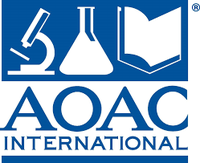NARILIS PhD student Mélanie Planque wins a Best Poster prize at the AOAC 2016 meeting!
In September 2016, Mélanie Planque participated to the annual meeting of the Association of analytical communities (AOAC) in Dallas. This meeting brings together a large number of international scientists in the field of food safety, with experience in the development of advanced analytical strategies for food applications. At this occasion, Mélanie presented a poster entitled “Highlight on bottlenecks for allergen control in food”. Moreover, her communication was selected for oral presentation and awarded by the Jury with a Best Poster Prize!
ABSTRACT
Highlight on bottlenecks for allergen control in food
Planque1, 2, T. Arnould2, P. Renard2, Ph. Delahaut1, M. Dieu2, N. Gillard1
1 CER Groupe, Health Department, rue du point du jour, 8, 6900 Marloie, Belgium.
2 Laboratory of Biochemistry and Cell Biology (URBC)-Namur Research Institute for Life Sciences (NARILIS), University of Namur, 61, rue de Bruxelles, 5000 Namur, Belgium
Food allergy is a major public health problem and implies a mandatory labelling of food allergens in Europe, North America, Australia/New Zealand and Japan. However, the undeclared putative presence of these allergens in food products is still widespread (incorrect labelling, cross-contamination…). Allergen-free products require Good Manufacturing Practices, including allergen management, but also performant analytical methods.
The goal of this study is to highlight the difficulties that both laboratories and authorities have to face regarding food allergens control. Indeed, there are no legal thresholds for food allergens.
To counter this lack, the Voluntary Incidental Trace Allergen Labeling (VITAL) was developed in New Zealand/Australia in order to help food producers in the management of cross contamination during food production, by fixing a limit threshold for each allergen. However, those limits do not have regulatory value and the risk assessment is “sample-based” in many countries. While several analytical methods are available among which ELISA, PCR and mass spectrometry but each analytical method has advantages and disadvantages that can lead to false positive or negative results. Eventually, the absence of analytical reference standard and the many different to present results of the studies (expressed as soluble proteins, peptides, total proteins or even food allergen ingredients) make difficult comparisons between those different methods by food producers.
 NAmur Research Institute for LIfe Sciences
NAmur Research Institute for LIfe Sciences


